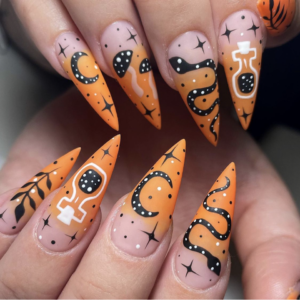Table of Contents
Introduction
Hangnails are those pesky little pieces of torn skin that dangle from the edges of our fingernails or toenails. They may seem trivial, but they can quickly become painful and irritating if left unattended. In this article, we’ll delve into the world of hangnails, exploring what they are, what causes them, their symptoms, as well as effective treatment and prevention methods.
What Triggers Hangnails?
Several factors contribute to the occurrence of hangnails. These may include dry skin, nail-biting, nail injuries, and exposure to certain chemicals. Dry skin is the primary catalyst for hangnails. When the skin surrounding the nail bed becomes dry and dehydrated, it becomes prone to cracking and peeling, ultimately leading to hangnails. Similarly, habitual nail-biting exposes the skin to bacteria, which can cause infections and result in the development of hangnails.
Injuries to the nail bed are another significant cause of hangnails. When the nail bed sustains an injury, the surrounding skin may tear, thereby giving birth to hangnails. Furthermore, frequent contact with chemicals like detergents, solvents, and cleaning agents can dry out the skin, making it susceptible to hangnails. If your work involves the use of such chemicals, remember to shield your hands with gloves to minimize the risk.
The Telltale Signs of Hangnails
Hangnails bring about discomfort and pain, making them hard to ignore. Common symptoms include tenderness and discomfort around the nail bed, accompanied by redness and swelling in the affected area. In some cases, hangnails may even become infected, resulting in the formation of pus or discharge. In severe instances, the hangnail may even bleed.
If you experience any of these symptoms, it’s crucial to take prompt action to prevent further complications. Neglecting a hangnail can pave the way for infections and other severe nail-related issues.
Treating and Preventing Hangnails
Thankfully, there are various methods to both treat and prevent hangnails. To start, if you’re dealing with a hangnail, soak the affected finger in warm water to soften the skin surrounding the nail bed. This softening process will facilitate the careful removal of the hangnail without causing any additional harm to your skin. Once the skin has become sufficiently supple, make use of clean nail clippers or scissors to trim the hangnail gently.
Moisturizing your nails is another essential step in preventing hangnails. Given that dry skin is a prominent cause of hangnails, it’s imperative to keep your nails adequately moisturized. You can achieve this by applying a moisturizing cream or lotion to your nails and skin regularly, ensuring optimal hydration.
Additionally, breaking the habit of nail-biting significantly reduces the likelihood of developing hangnails. If you find yourself biting your nails frequently, try engaging your hands with a stress ball or fidget spinner to redirect your attention and curb the habit.
Lastly, when engaging in household chores or working with chemicals, make a habit of wearing gloves. These protective coverings will shield your hands from chemical exposure, preventing your skin from drying out and reducing the risk of hangnails.
Conclusion
Now armed with a better understanding of hangnails, their triggers, and effective treatment and prevention measures, you can tackle these bothersome nuisances head-on. By implementing the tips outlined in this article, you’ll be well on your way to maintaining healthy, hangnail-free nails. Remember, addressing hangnails promptly not only ensures your nails look good but also safeguards against potential infections and more severe nail problems.






